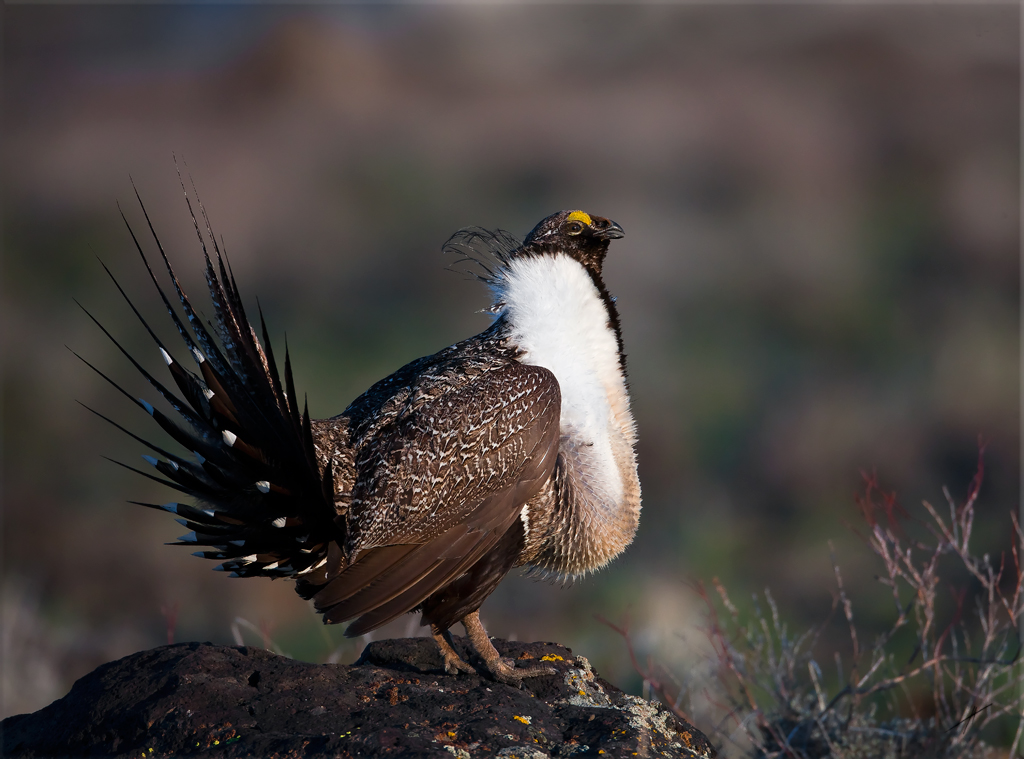Having the honor of serving as director of the Nevada Department of Wildlife for 10 years and working with a wide range of excellent wildlife and range ecologists across the West on issues related to sagebrush country, I’m sounding the alarm for action. We can’t turn a blind eye or get bogged down by politics or we’ll lose this important ecosystem, which will have devastating impacts to our state.
Nevada, the Sagebrush State, perhaps exemplifies how deeply connected the sagebrush biome is to us — as a people. This native plant is our state flower, on our state flag and in our state song. However, we’re seeing our iconic landscape disappear under our watch. Recent analysis of satellite imagery found that 1.3 million acres of sagebrush habitat is lost every year. Nevada once had more than 70 million acres of sagebrush, but from 1986 to 2020, nearly half of that sagebrush habitat was lost — either in entirety or degraded to such a point that it no longer functioned properly. These poor condition rangelands are plagued by larger, hotter and more frequent fires that are causing unhealthy air conditions, straining our local communities and devastating the land’s ability to support economies dependent on these lands and our wildlife.
At the heart of this system is the greater sage grouse, a species synonymous with the sagebrush and a critical indicator of the health of this unique landscape. Since 1965, sage grouse populations rangewide have plummeted by more than 80 percent, a stark manifestation of the declining health of their habitat. Here in Nevada, our sage grouse populations are also seeing dramatic declines.
The decline of the sage grouse is further evidence of a sick ecosystem. In Nevada, more than 367 species of wildlife, and multiple plants and invertebrates are found in this habitat type that occur nowhere else in the world. And then there are the millions of Americans who benefit indirectly through ecosystem services that provide clean air, water and economic opportunities. From ranchers to recreation enthusiasts, a healthy sagebrush country is essential for the livelihoods and quality of life here in Nevada and across in the West.
Currently, the Bureau of Land Management (BLM) is in a critical phase of revising its Resource Management Plans, an opportunity that must not be squandered given that they manage the majority of sage grouse habitat. These plans are more than just documents; they are blueprints for future land use and conservation strategies that can determine the fate of not just the bird but more broadly the future health of our public lands. The revision process is integrating the latest scientific research and climate data to ensure that the decisions made today will stand the test of the environmental challenges we face.
This is a pivotal moment for Nevada and our neighbors. The state, renowned for its rugged independence and deep connection to its land, faces a test of its commitment to preserving our natural heritage. The sagebrush biome, with the sage grouse as its sentinel, is signaling a clear need for action. It’s not merely about saving a bird — it’s about maintaining the ecological balance of an area that defines much of the Western U.S.
The revised plans for how to manage the birds’ habitat on public lands needs to be effective. Not only do these need to be finalized promptly but implemented with the urgency this issue demands. Proactive measures, focused on habitat restoration and protection, are required. It’s about doing the right things in the right places. Strategic grazing management, control of invasive species and safeguarding the birds’ important mating grounds are all actions that can help turn the tide for the sage grouse and, by extension, for the sagebrush biome.
The role of the federal and state leaders in this cannot be overstated. Nevada’s Sagebrush Ecosystem Program has been a regional leader and must continue to do so, with the support of our people and industries. Conservation is not just a policy or a plan on paper; it requires commitment, funding and a collaborative approach that includes local communities, scientists and policymakers. We must collectively prioritize these efforts, recognizing that the health of our public lands is directly tied to the health of our people and our future.
The sage grouse and its decline are a clarion call to all who cherish the wild, open spaces of the American West. This isn’t just about one species; it’s about preserving a landscape that offers refuge, recreation and economic resources to countless individuals. Let this moment in our history be marked by action and foresight, not regret and loss. It’s time for our leaders to step forward and deliver on the promise of smart conservation action so that we have healthy public lands that we can proudly pass on to future generations. The pulse of the West is faint; we must act swiftly to ensure it beats strong once again.
Tony Wasley is president of the Wildlife Management Institute and former director of the Nevada Department of Wildlife. He lives in Reno.
The Nevada Independent welcomes informed, cogent rebuttals to opinion pieces such as this. Send them to [email protected].

